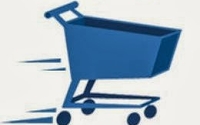 By Chuck Martin
By Chuck Martin
There have been numerous estimates on the potential size or value of the IoT marketplace, generally measured in the trillions of dollars.
Now one major study is out that breaks down where that value may be, and much of it is in retail. And the study provides a detailed look at where the money is throughout the in-store process.
The overall potential impact of IoT by 2025 is estimated at somewhere between $3.9 trillion and $11 trillion, according to a major new research study by the McKinsey Global Institute.
But I find the retail sections to be most interesting, even to the point of describing the IoT-powered store of the future.
Retail environments in the study included stores, banks, restaurants and arenas; basically anywhere consumers consider and buy.
McKinsey estimates the potential economic impact of IoT at retail between $410 billion and $1.2 trillion by the year 2025. Not that anyone will come back and check these numbers by then, but at least they point to a market direction.
IoT at retail includes various features or functions in a store environment. Here’s what’s included in McKinsey’s view of the store of the future:
- Layout optimization – Based on comprehensive analysis of in-store customer behavior
- Real-time personalized promotions – Customized offers provided based on location, purchase history, etc.
- Customer tracking – Real-time in-store analytics enables improved customer care and reduced inventory shrinkage
- Automated checkout – Beacon automatically charges customers as they walk out of the store.
- Inventory optimization – Based on automatic shelf and inventory monitoring and replenishment
Even more interestingly, McKinsey puts a dollar amount of potential economic impact in each of the in-store capabilities. Here’s the list of potential economic impact for each:
- $150-380 billion – Automated checkout
- $89-348 billion – Real-time, in-store promotions
- $79-158 billion – Layout optimization
- $23-92 billion – Inventory shrinkage
- $18-36 billion – Energy management
- $12-45 billion – Smart CRM
- $10-19 billion – Improved staff allocation
- $4-10 billion – Employee productivity
Even if these estimates are off by a few billion dollars each, that’s still big potential value in IoT at retail.
Based on these numbers, consumers can expect to see a big push for self-checkout and be on the lookout for more in-store promotions. Because that’s where the money is.










